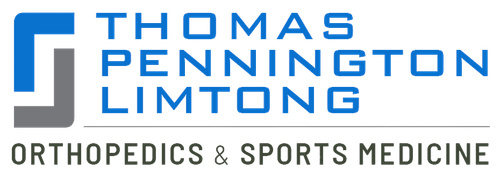 Surgery to repair a torn rotator cuff will usually involve reattaching the tendon to the head of the upper arm bone or humerus. If the tear is only partial, the surgeon may only perform a smoothing or trimming procedure called a debridement. If a full tear has occurred within the thickest part of the tendon, it will be repaired by suturing the two sides back together.
Surgery to repair a torn rotator cuff will usually involve reattaching the tendon to the head of the upper arm bone or humerus. If the tear is only partial, the surgeon may only perform a smoothing or trimming procedure called a debridement. If a full tear has occurred within the thickest part of the tendon, it will be repaired by suturing the two sides back together.
The Knee and Shoulder Institute, headed by experienced, board certified orthopedic surgeons, Dr. Steven Thomas and Dr. Gregory Bigler, provides advanced surgical treatments for rotator cuff tears. Patients in Las Vegas, Nevada and surrounding communities have an opportunity to receive treatments from Dr. Thomas and Dr. Bigler.
Options for Surgical Repair
Innovative surgical techniques have made the rotator cuff repair procedures less invasive than before. Several treatment approaches are available today, and each has its own pros and cons. However, in every treatment option, the goal is to get the tendon to heal.
The most commonly used techniques for rotator cuff repair include traditional open repair surgery, arthroscopic surgery, and mini-open repair surgery. Patients typically report similar strength improvement, pain relief and overall satisfaction with all three techniques.
Traditional Open Repair Surgery
If the tear is complicated or large, or additional reconstruction such as a tendon transfer is necessary, the surgeon may recommend a traditional open surgical incision. The surgeon will make a several centimeters long incision over the shoulder and detach the shoulder muscle to gain better access to the torn tendon. Through the incision, the surgeon will remove bone spurs from the underside of the acromion.
All-Arthroscopic Repair Surgery
This procedure will involve the surgical insertion of a tiny camera called an arthroscope inside the shoulder joint. The surgeon will be able to view the underlying structures on a screen, and use these pictures as a guide to perform precise repair with miniature surgical tools.
The surgeon can perform this procedure with very small incisions because the tiny arthroscope will enable clear viewing of the inside structure without have to create a large incision. The repair to the torn rotator cuff with arthroscopic surgery can be performed on an outpatient basis, and will involve less pain, less risk and less downtime.
Mini-Open Repair Surgery
Using advanced technology and instruments, the surgeon can perform a mini-open repair procedure. The incision is relatively smaller than in the case of traditional open surgery, and will typically be three to five centimeters in length. Arthroscopy is used in this technique to examine and treat damage to other structures within the joint.
Bone spurs are often removed arthroscopically, which eliminates the need to detach the deltoid muscle. Once the arthroscopic part is over, the surgeon will repair the rotator cuff through the mini-open incision. In case of tendon repair, the surgeon will view the shoulder structure directly and not through the camera. Board certified orthopedic surgeons Dr. Thomas and Dr. Bigler receive patients from Las Vegas, Nevada and nearby areas.
Recovery
The surgeon will usually prescribe pain medications for the first few days after the procedure. If the pain persists beyond a few days, the patient should contact the surgeon. Rehabilitation plays a critical part in helping the patient to return to their normal daily routine.
If you would like to schedule an appointment or learn more about the Knee and Shoulder Institute procedures & treatments performed by Las Vegas, Nevada board certified surgeons Steven C. Thomas, MD and Gregory T. Bigler, MD. call (702) 933-9393; Physical Therapy (702) 933-9394
